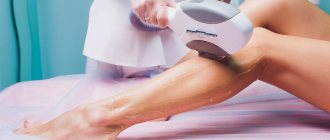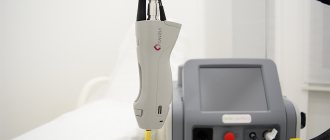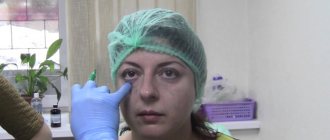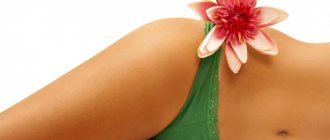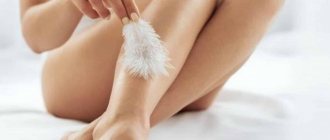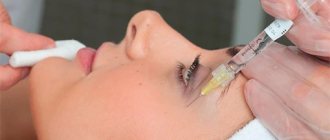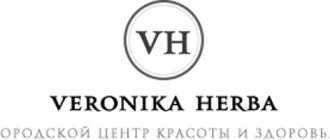What is laser hair removal?
Laser hair removal is a cosmetic medical procedure that is performed to minimize hair growth. The effect is achieved through strong heating of the follicles. The hair shaft evaporates or falls out along with the dead “root.”
The result is noticeable immediately after the first procedure. Usually in one session the number of hairs is reduced by 10-25%. The intensity of hair destruction depends on its properties, skin color, type of laser, and treatment area. Complete hair removal requires 4 to 10 sessions. After completing the course, hair does not appear in the treated area for several months and sometimes years.
To get rid of hair, four types of laser devices are used:
- neodymium (universal, effective, but rather painful laser);
- diode (suitable for any type of skin and hair, works slowly, but more delicately);
- alexandrite (used to remove brunette and brown hair in combination with a cooling gel);
- ruby (outdated model with low speed, suitable only for dark hair on light skin).
Despite their advantages, laser devices can cause side effects and complications in inept hands.
Preparing for laser hair removal
Laser hair removal is carried out in special rooms; those present are given protective glasses. Before the session, the area is cleaned and treated with anesthetic gel.
Following simple rules allows you to prevent any complications.
Laser hair removal is effective if you do not violate the following prohibitions:
- one month before the session you should not sunbathe or use artificial tanning creams;
- 3 weeks in advance, give up lotions, tonics with alcohol and other aggressive cosmetics;
- stop taking tetracyclines 2 weeks before;
- Before the procedure, clean the skin of cosmetics.
Pre-shave is performed at the time specified by the cosmetologist to avoid burns. Experts recommend taking into account the menstrual cycle, since during this period the pain threshold increases.
Laser treatment of 3-4 degree burns
If the burn is deep and extensive, its treatment will not be possible without transplanting skin flaps.
The skin can be taken from the patient himself or from a donor. Also, in some cases, artificial materials are used. During treatment, it is also necessary to monitor the condition of the kidneys, spleen, liver and other organs - they could be damaged as a result of intoxication after a severe burn and tissue death.
After skin transplantation, according to statistics from doctors from various medical institutions, transplant rejection occurs in 8-15% of cases. Laser therapy reduces the number of unsuccessful transplants to zero.
So, a study was conducted in one of the clinics. Under observation were 112 children from 1 to 14 years old who underwent rehabilitation after skin transplantation. More than 70% of children belonged to the younger age group under 5 years. All patients studied received good results: as a result of laser therapy, tissue healing occurred on average 5.5 days earlier than with traditional treatment methods.
The treatment method was as follows: before the operation, the autodermal flap was irradiated with a laser with a pulse power of 8-15 W and a frequency of 1000 Hz for 60 s. In the postoperative period, the transplanted autoflap is exposed for 60 - 300 s, depending on the area of the closed burn wound. Course duration is 7-10 procedures, one procedure per day. The recovery stage after burns is reduced by 1.5 times compared to cases without the use of laser exposure.
Laser hair removal: contraindications and side effects for women
If contraindications are ignored, burns, allergies, rashes or other complications will occur after laser hair removal. Contraindications are divided into two groups: absolute and relative.
Absolute contraindications to laser hair removal procedure
Laser hair removal is prohibited if there are absolute contraindications, such as:
- oncology, tumors (possible growth of unwanted cells);
- diabetes (the procedure provokes surges in sugar levels);
- immune and dermatological chronic diseases;
- individual intolerance to laser beam;
- taking sulfa drugs and antibiotics (using drugs increases the sensitivity of the skin).
Light or gray hair is a contraindication for treatment with all types of lasers except neodymium. Alexandrite, ruby equipment better removes dark hair containing melanin. It is not advisable to expose tanned or dark skin to the alexandrite ray, as light spots may appear.
Sometimes contraindications include age under 18 years. In young people, hair follicles are not developed, and skin inflammation often occurs. Epilation of some areas is allowed from 13 years of age.
Relative contraindications to laser hair removal procedure
If there are relative contraindications, sessions must be coordinated with a dermatologist, gynecologist or therapist. The permission of the attending physician is required in the following cases:
- wounds, scars, abrasions, burns, irritations, tattoos or birthmarks in the affected area;
- seasonal allergic reactions, pigmentation disorders;
- respiratory infections in the active phase;
- cardiovascular and endocrine diseases;
- pregnancy, lactation period;
- epilepsy, mental illness.
The dermatologist's permission is necessary if the patient sunbathed two weeks before the procedure.
Contraindications for laser hair removal on the face
The following contraindications may become an obstacle to hair removal in the facial area:
- oncology, diabetes, acute viral infections;
- chronic skin diseases, pigmentation disorders;
- herpes, moles, varicose veins, wounds and other damage;
- intense tan obtained within two weeks before and after treatment;
- dark skin, strong tan, insufficient contrast between the color of the hairs and skin (the limitation applies when using alexandrite and ruby lasers).
Laser hair removal of the upper lip has the same contraindications and consequences. If there is a lot of hair above the lip, the cosmetologist will advise the patient to see an endocrinologist.
Are there any contraindications to diode hair removal?
The diode laser removes any hair in the active growth phase. It is most effective on light hairs on slightly dark skin. The beam easily deals with ingrown or hard hair shafts in hard-to-reach places.
Diode laser hair removal has standard contraindications and consequences. The procedure is prohibited if you have oncology, epilepsy, a tendency to tissue scarring, or if you are taking antibiotics. There should be no varicose veins, herpes, fungus, allergies, wounds and abrasions, or numerous moles in the laser impact area.
How does the alexandrite laser work?
The principle of the laser procedure is the same for all laser devices . How exactly do laser pulses affect hairs?
The absorption of light energy occurs due to the coloring pigment melanin, which is located in the hair shaft. After this, the hair is heated to a significant temperature, the resulting heat reaches the hair follicles. The blood vessels that feed the hair, the nerve endings and the perifollicular sac are destroyed by temperature. The hair simply has nowhere else to grow .
With the help of alexandrite, laser light beams are generated that have a wavelength of 755 nm . This wave is short, but it has a high absorption coefficient, due to which the hair heats up very quickly. That is why, when using this type of laser, a smaller number of procedures is often sufficient for successful hair removal .
The radiation frequency can be 5 Hz, so the procedure time will be shorter.
The wave frequency of alexandrite laser units is optimal for hair removal : hair melanin best absorbs the heat of a laser beam with a frequency of 755 nm.
Since laser energy carries heat, all modern laser devices try to be equipped with cooling elements .
Possible consequences and side effects of laser hair removal
The incompetence of a cosmetologist and ignoring contraindications can lead to unpleasant consequences.
| Type of early complications | Cause of occurrence |
| Unprofessionalism of a specialist, incorrect choice of device or gel. Skin sensitivity in the deep bikini area. |
| Hair “nests” become inflamed with a tendency to hyperhidrosis, as well as due to visiting the pool between sessions. |
| Occurs when treating the area around the mouth or the deep bikini area if the patient has a history of herpes. |
| It is a reaction to topical painkillers, gas and cosmetics. Manifests itself in the form of urticaria, itching, dermatitis. |
| The patient did not wear special glasses or contact lenses when treating the eyebrow area. |
Late side effects include scarring, increased hair growth, and hyperpigmentation. When epilating the armpits with a diode and alexandrite device, bromhidrosis and leukotrichia may develop.
Complications: how to avoid or minimize them?
There will be no health consequences from laser hair removal if you choose a cosmetologist responsibly.
A competent specialist will select the device, type of radiation, and exposure parameters, taking into account the individual characteristics of the client.
The patient himself must study the contraindications and consult with his doctor. He will advise you to complete the treatment or prescribe a drug. For example, if you have a herpes virus, take antiviral medications 2 days before hair removal. Before the sessions, the cosmetologist will tell you the rules for preparing for the procedure. All recommendations must be strictly followed.
Myths about laser hair removal
The most common myth about laser follicle removal is the risk of disease. There is an opinion that the consequence of laser hair removal of the bikini is infertility, and treatment of the armpits is breast cancer. This is impossible, since the rays act pointwise, only on the hair or its “root”. The waves are short and penetrate only the superficial layer of the dermis.
The INFINITI network of laser hair removal salons offers the services of qualified cosmetologists. Epilation of any zones is performed at an affordable price.
Choice of laser: alexandrite or diode?
An alexandrite-based laser is somewhat more powerful and efficient than its diode competitor. But at the same time, diode ones have a great advantage: they can be used with dark skin types without fear of burns. This is due to the fact that the rays of diode devices interact with melanin much worse. Therefore, this positive moment will also have its negative consequences .
Lasers with diodes are contact , which means that the device head comes into contact with the epidermis. To ensure that radiation energy reaches the skin as efficiently as possible and without loss, a special gel is used to cover the skin before the procedure. When the procedure is completed, all remnants of the gel must be removed/washed off the skin.
If there are hairs on the skin, they will be heated by the diode laser, as a result of which the patient may receive a minor burn, and the energy will not reach the root system in the required amount. Therefore, before the diode laser hair removal procedure, they must be shaved in advance, then all the energy will be directed directly to the roots.
When cosmetologists use alexandrite lasers, skin preparation in the form of shaving is not required, since 99% of lasers of this type are non-contact!
We determine the type of laser by its attachment
Now, after reading the main features of hair removal, you can independently determine the type of laser by its attachment, which is used to carry out the procedure.
Edema
Redness and swelling after coagulation of spider veins are natural and disappear on their own in the first three days. In rare cases, they are stored for 5-7 days.
However, if there is severe swelling on the face after laser removal of blood vessels, it is recommended to see your doctor.
Immediately after the procedure, ice helps remove swelling, but it cannot be kept on the skin for a long time. The exposure time is no more than 20-30 seconds, otherwise the facial nerve can get cold.
How does the procedure work?
To carry out the procedure, it is advisable to have hairs 1-2 mm long (this length is achieved 1-3 days after shaving). You should not let your hair grow for 2 weeks, as this may lead to less effectiveness.
Before the procedure begins, the patient is placed on a couch. The specialist explains exactly how it will take place, what contraindications there are after exposure and what skin care is required during this period. The specialist also clarifies whether there have been any visits to the solarium in the last 2 weeks, because this is a contraindication for the procedure.
The unpleasant sensations from the laser are minimal: cryogen is sprayed and a slight chill is felt. When epilating, there is a smell of burnt hair, this is normal.
Some patients report more acute sensations in the bikini area, where there is a lot of hair and it has a tougher structure. For increased sensitivity, special painkillers are used.
At the end of the procedure, only “stumps” of hair will remain, which will begin to fall out on their own within 4-9 days after laser treatment.
After the procedure
A couple of days after the procedure, you can use special scrubs that will help cleanse the skin of these hair residues.
After the procedure, it is prohibited to pull out the bulbs using tweezers, wax or sugaring. You just need to wait a little until the skin clears itself of them.
The main advantage of the procedure is the absence of blackheads inherent in shaving. Skin remains smooth between sessions.
Between procedures, shaving is allowed, but any type of hair removal is prohibited! This method of getting rid of unwanted vegetation will not affect further procedures.
Factors influencing the development of post-burn scars
Patient's age. Children and teenagers, due to their love of experimentation and simple carelessness, become frequent guests of emergency rooms, including those with the problem of burns of varying severity. Despite the fact that the regenerative features of the skin at this age are better developed than in an adult, the risk of forming unsightly scars is very high. The reason for this is delicate and thin skin, which is easily injured.
Localization of damage. Burns and scars on the neck and upper extremities are the most difficult to treat. The skin in these places is not elastic enough, recovery is slow due to less collagen and elastin production.
Conditions for wound healing. Infection of the damaged area increases the rehabilitation period, and therefore increases the risk of the formation of hypertrophic and keloid scars.
Multiple surgical interventions at the burn site. Surgical actions more than once in the area of damage can provoke re-formation of scars.
Genetic predisposition to the formation of keloid scars. In this case, keloid scars can form regardless of the wound healing conditions. Constant monitoring and timely prevention of pathological tissue scarring are required.
